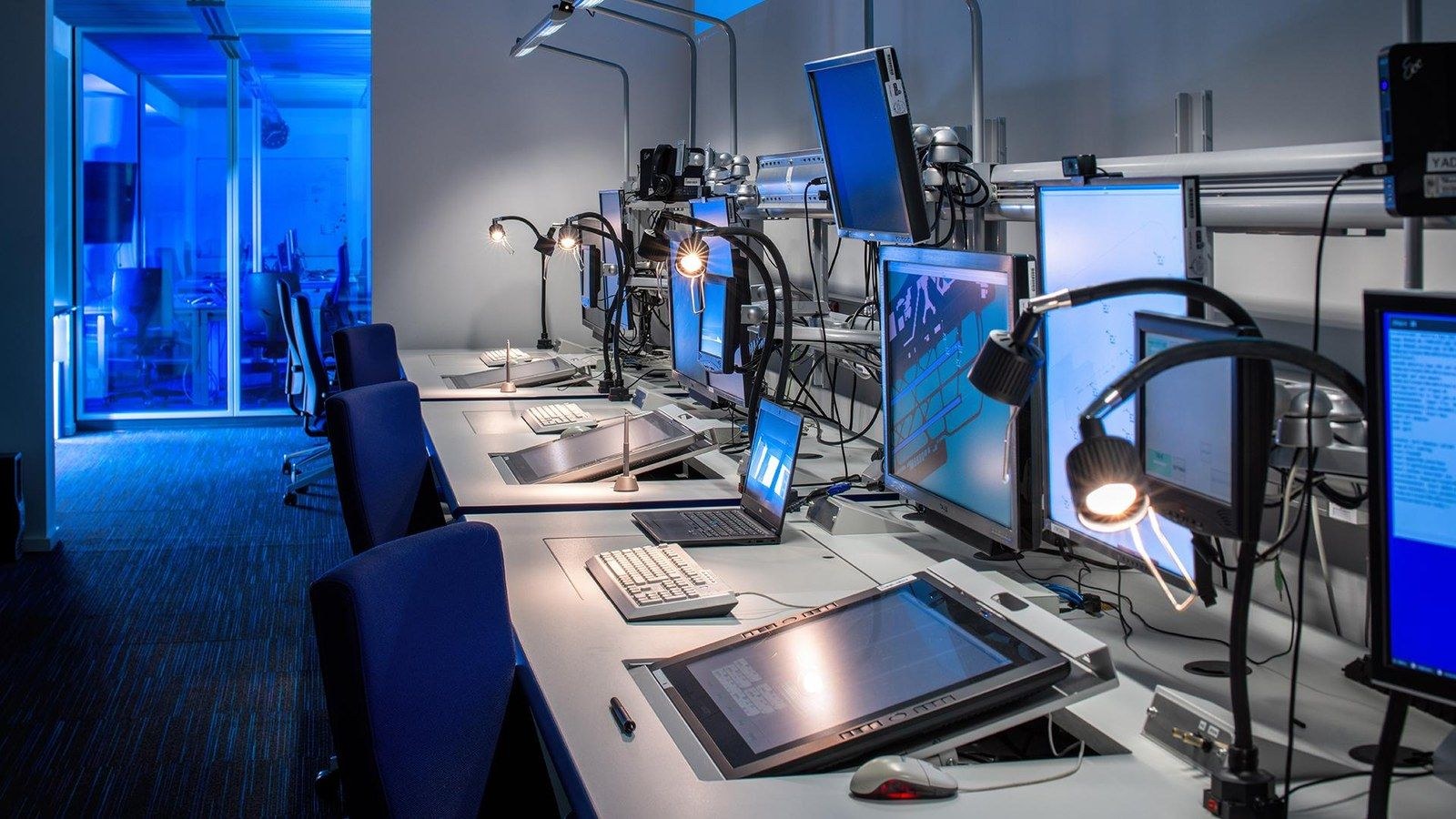Air Traffic Management and Operations Simulator (ATMOS)

The Air Traffic Management and Operations Simulator (ATMOS) is an experimental facility for simulating air traffic in real time.
In a simulated airspace, the ATMOS can be used to test new approach and landing procedures in terms of flight safety, pollution reduction and traffic capacity. This facility allows researchers and air traffic controllers to jointly evaluate new working methods for controlling and influencing air traffic. One area of research is determining the strain on controllers, including critical situations.
The ATMOS also allows fully automated scenarios to be conducted. Planning and coordination processes can be tested in this way.
The benefit of these types of simulation is that, apart from being a safe way to conduct experiments, certain traffic situations can be repeated. In addition, traffic volumes can be simulated as they are expected in the future.
In ATMOS, the entire flight from departure to landing at the destination aerodrome can be simulated for a large number of aircraft. It is also possible to more closely examine only one aspect of flight, such as taxiing from the runway to the gate.
Research areas
Validation of controller assistance tools
Innovative assistance and display functions for controlling aircraft are being examined.
Communication between controllers and pilots
Novel digital data connections for controller-pilot communication are being researched.
Validation of new approach procedures
Innovative approach procedures are being assessed in terms of noise abatement, fuel savings and shortening of flight routes.
Situational awareness and workload of controllers
When introducing new procedures, it has to be ensured that the situational awareness of controllers is not compromised and the workload does not rise.
The simulator is primarily designed for performing assessments with interacting participants, which is why the traffic situations have to be simulated in real time. The assessments relate to technical air navigation services issues from the perspective of ground controllers. It is generally possible to use any airspace in the world, including one or more airports as desired. If necessary, the selected airport can be adjusted in line with different air traffic control sectors.
Technical background
The ATMOS is divided into an airborne component and a ground component, and their simulation computers are connected via a local network.
The airborne component can be the different testing facilities of the Institute of Flight Guidance or experimental aircraft. However, the airborne component is usually pseudo pilot stations that are physically located away from the controller working positions. Since each pseudo pilot deals with several "aircraft", the controller can make contact with several "aircraft" and issue them instructions.
The ground component takes the form of the air traffic management simulator, which is the central experimental facility in the total simulation of "aircraft in air transport". It calculates a physical model for each aircraft. Using both today's and experimental radar working positions, the controllers interact with the simulation system and the pseudo pilots.
The ATMOS can be connected to all other simulators of the Institute of Flight Guidance, such as the cockpit simulator and the tower simulator, allowing complex, distributed simulations to be performed in the air transport system.
